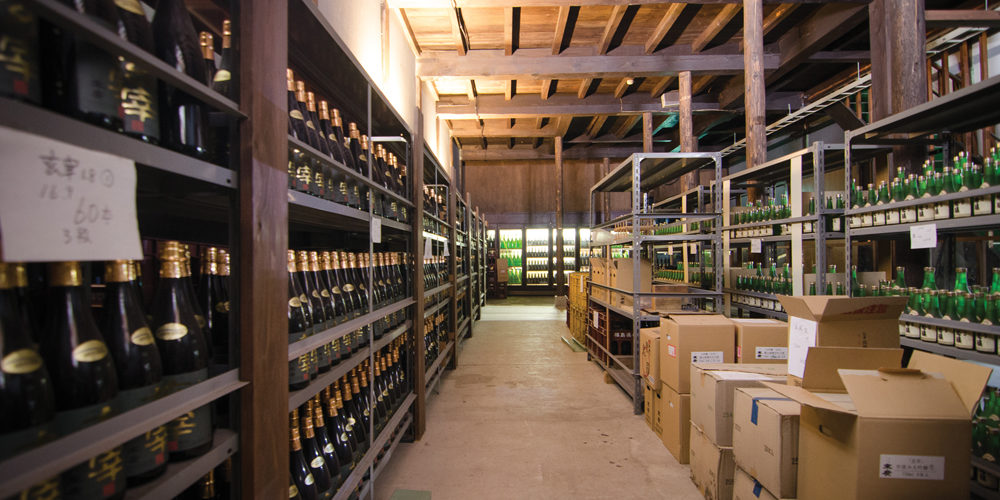At 7:30pm on the evening of October 1st in Japan, happy drinkers synchronized a nation-wide call of “kampai” via the internet and televised it from three locations: Tokyo, Hyogo and Saga. October 1st is “Nihonshu no Hi,” or “Sake Day,” and while the industry has celebrated this day since the early 1970s, this marked the first time there was a coordinated “cheers” with Japan’s official national beverage across the entire archipelago.
The event was a great indicator of the current level of sake’s popularity in Japan. However, looking just below the surface, some might lament there is not much to be so effusive about, much less to toast.
Statistics, as we know, can be downright deceiving. In the sake world there are monthly numbers and these are often compared to the same month of the previous year. There are yearly numbers for the calendar year (January to December), the fiscal year (in Japan, April to March) and the “Brewing Year” (an important industry designation that runs from July to June). These all go up and down so much it can be hard to follow, and in the end, any one of them taken alone is a fairly trivial snapshot of what is happening.
For example, in spite of the apparent rise in sake’s popularity, total sake shipments from brewers were down 5.2% for the fiscal year ending March 31st. However, ginjo and junmai types were all up several points. It was the more mundane grades of honjozo and futsu-shu–which combine for 75% of the market–that dragged the overall numbers down.
If we peel away one more layer and look at the Brewing Year ending June 30th, we again see a decrease, but this time of only 2.2%. As usual in this year premium grades were up between three and ten percent. Mediocre grades with their larger market share were down, albeit less so than the previous period. While the significance may not be obvious or even interesting to many, in the course of but three months the overall rate of contraction slowed a full three percent.
No one knows for sure what is behind the current surge in sake popularity. It could be our contemporary interest in food pairings. It’s certainly easier to pair sake with food than Japan’s indigenous distillate shochu. In fact, sake may be the most food-friendly beverage on the planet. While costs have not dropped, good sake has never been that expensive compared to other premium sipping beverages. Wine professionals everywhere are taking sake seriously now, and that trend is extremely promising.
One young brewer who is benefitting tremendously from the current boom offered a much drier, if not disturbingly plausible and less romantic, hypothesis: “Everything cycles in and out of popularity. It’s just sake’s time again.”
Still, there is some incongruence between the fervor and the numbers. The fervor is buoyed by premium grades of sake. But fervor alone will not pay the bills for the majority of the industry. I have three observations that are relevant to what is happening now in the sake world, some of which I’ve discussed here before.
One, there is plenty of innovation, but not in ways that are fundamentally altering the nature of the product. There are some variations in production and style. There is more innovation in packaging, marketing and product concepts like using only local rice. Some brewers naturally push the envelope and some go too far. If they do not test the limits from time to time, growth is not possible. Overall, innovation in the sake world is alive, well and pertinent.
Two, a rising tide raises all sake-boats. As pointed out above, the lion’s share of the industry is supported by less expensive, less regal sake. This sector should continue to benefit from the quickly growing popularity of more refined grades. All publicity is good publicity.
Three, there is a definite return to tradition taking place in the industry. Warming premium sake is back in vogue. More labor-intensive production methods like kimoto (explained in this issue) are challenges that more and more brewers are embracing with wonderful results. Brewers are noticeably eschewing the modern fruit-bomb yeasts for more traditional yeasts that have been the backbone of sake styles for decades.
Whether this lean toward tradition is a by-product of sake’s resurgence or a contributing factor is hard to ascertain. Nevertheless, it is very real. The most encouraging trend in the context of premium sake is how popular it has become among young consumers, in particular young women. Growth in these demographics is a good sign.
Sake is finally cool. Production numbers don’t necessarily indicate a revival and are still heading the wrong way by some measures. Sake’s image, however, has been shifting direction. We can focus on the snapshot or we can focus on the trend. Assuming you are in a community where sake is cool, you can feel the enthusiasm around you. Feeding on that enthusiasm and sharing it will help raise overall sake awareness–and the tide that lifts all sake-boats. Maybe the next mass kampai can be world-wide, not just Japan-wide.
In this issue we learn about the traditional kimoto brewing method, Haruo Matsuzaki talks about the brilliance of Fukushima sake, and Ry Beville approaches the prefecture from a different angle. Tim Sullivan talks about great opportunities to enjoy sushi and sake together in New York City, and world-famous techno musician Richie Hawtin shares his passion for sake, drawing some unexpected and fascinating connections between music and sake. Enjoy it all with a bottle of sake. You’ll need a glass, too.
John Gauntner






